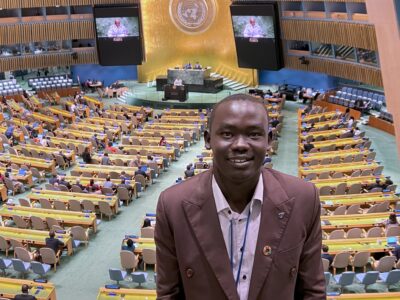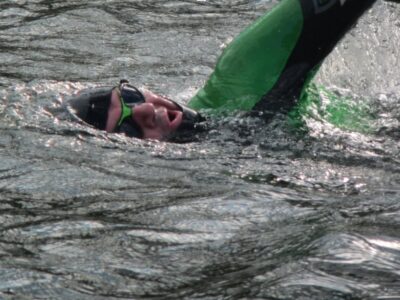The climate crisis challenges our water supply in many ways, from deadly hurricanes to widespread and severe droughts. To combat water scarcity, neighborhoods and communities must reconsider the design of their wastewater systems.
Autumn delivered a deluge of rainfall to the Atlantic, with over 100 people killed in the wreckage of Hurricane Ian in Florida and 50% of transmission lines damaged in the landfall of Hurricane Fiona in Puerto Rico, leaving hundreds of thousands of people without power or water.
In October, state officials reported that the past three years have been California’s driest on record, with no signs of subsiding.
At the same time, drought in the Texas High Plains had severely interrupted October’s cotton harvest, with farmers expected to abandon 70% of their crop.
In British Columbia, more than 65,000 salmon have died before they could spawn in the Neekas river, which has been detrimental to the Heiltsuk people of Bella Bella, an Indigenous community that relies on the fish for sustenance and livelihood.
And on the other side of the continent, seven counties are currently under drought watch in New York, despite recent rainfall.
In fact, researchers have announced that climate change has made drought 20 times more likely in Europe, Asia, and North America. And that likelihood is expected to increase drastically as global temperatures continue to rise.
Clearly, water scarcity is an existential issue for much of the world, disrupting industry and sustenance for millions of people. So what can we do about it?
While reducing water consumption is a noble endeavor, communities can also combat water scarcity by redesigning their wastewater systems. The stuff you flush down your toilet can be reclaimed as potable water.
The Omega Institute — a holistic retreat center in Rhinebeck, New York — provides one example of what a more symbiotic wastewater system can look like. The center commissioned an impressive wastewater reclamation system for its 250-acre campus.
The system, dubbed the Eco Machine, filters and purifies 52,000 gallons of wastewater per day from 119 buildings, accommodating 23,000 guests per year.
Instead of chemicals and energy, the Eco Machine uses only algae, fungi, bacteria, plants, and gravity.

As a teenager, I visited the facility — the first in the world to receive both the Living Building Challenge and LEED Platinum certifications — when it was unveiled in 2009. The system inspired me to consider how communities can go beyond sustainability and strive for regeneration of the ecosphere.
The Eco Machine is an example of regenerative design. Beyond sustaining the supply of available water, the system recharges the groundwater while nourishing the growth of an entire ecosystem. And it all begins with the flush of a toilet.
Wastewater travels from toilets, sinks, and showers into tanks where solid waste settles out and water flow is balanced out to handle surges in use.
Next, microbes in the Eco Machine devour ammonia, phosphorus, nitrogen, and potassium from the waste, eliminating them from the water.
Four constructed wetlands in the system, each roughly the size of a basketball court, are lined with rubber and filed with gravel. Beautiful native plants grow to massive heights atop the gravel, digesting harmful substances and removing foul odors from the wastewater.
Water flows from the wetlands into aerated lagoons and is fed to more plants, fungi, algae, and snails, converting ammonia into nitrates and toxins into harmless elements. Water is then sent through a coarse sand filter where microorganisms digest the remnant nitrates.
The water becomes clean and potable through this system, although regulations prohibit drinking it, so water is dispersed back into the groundwater below the campus, completing the cycle and allowing the process to begin again.
Conventional sewage systems, which can rely on intensive energy and chemical usage, typically release treated wastewater (and often untreated wastewater) into our waterways, which ultimately empty into the ocean.
The Eco Machine, however, releases treated wastewater into the local aquifer, where it can be drawn again for use in sinks and showers. This is called a closed hydrological loop.

The Eco Machine employs a practice called biomimicry — designing regenerative systems based on ecological processes — to solve human problems such as water scarcity. And communities can adopt this model to aid their efforts in fighting drought.
While the Omega Institute is much smaller in size and population than a town or city, neighborhoods can build their own versions of the Eco Machine at larger scales. Such a system can ameliorate droughts by restoring water to the aquifer in arid communities. Reclaimed wastewater can also be used to irrigate farmland and fill toilet bowls.
Over 80% of the world’s wastewater is not safely treated. The UN estimates that 1.42 billion people live in areas of high or extremely high water vulnerability, and about two thirds of the global population experience severe water scarcity during at least one month of the year.
Wastewater reclamation systems are an expensive but necessary investment to combat water scarcity. The infrastructure can be funded by the government and managed at the municipal level.
In California, for example, the East Bay Municipal Utility District runs a water reclamation system that saves 5.5 billion gallons per year, aiming to transform wastewater into drinking water for 83,000 households.
The climate crisis poses an existential threat to water abundance everywhere, but a future without severe drought is possible. All we need is the humility to learn from nature — and the political courage to transform our excrement into potable water!
Joshua Nodiff is a climate justice writer and graduate student in the Climate and Society program at the Columbia Climate School.
Views and opinions expressed here are those of the authors, and do not necessarily reflect the official position of the Columbia Climate School, Earth Institute or Columbia University.




I am thrilled to see this process described so well. This IS doable! Here on Lonng Island clean, drinkable water is used to water acres and acres …of grass! Lawns should be irtigated with recaptured water, not water from ancient aquifers which now show signs of limited capacity. I applaud Josh Nodiff for bringing this important issue and solution into our awareness.